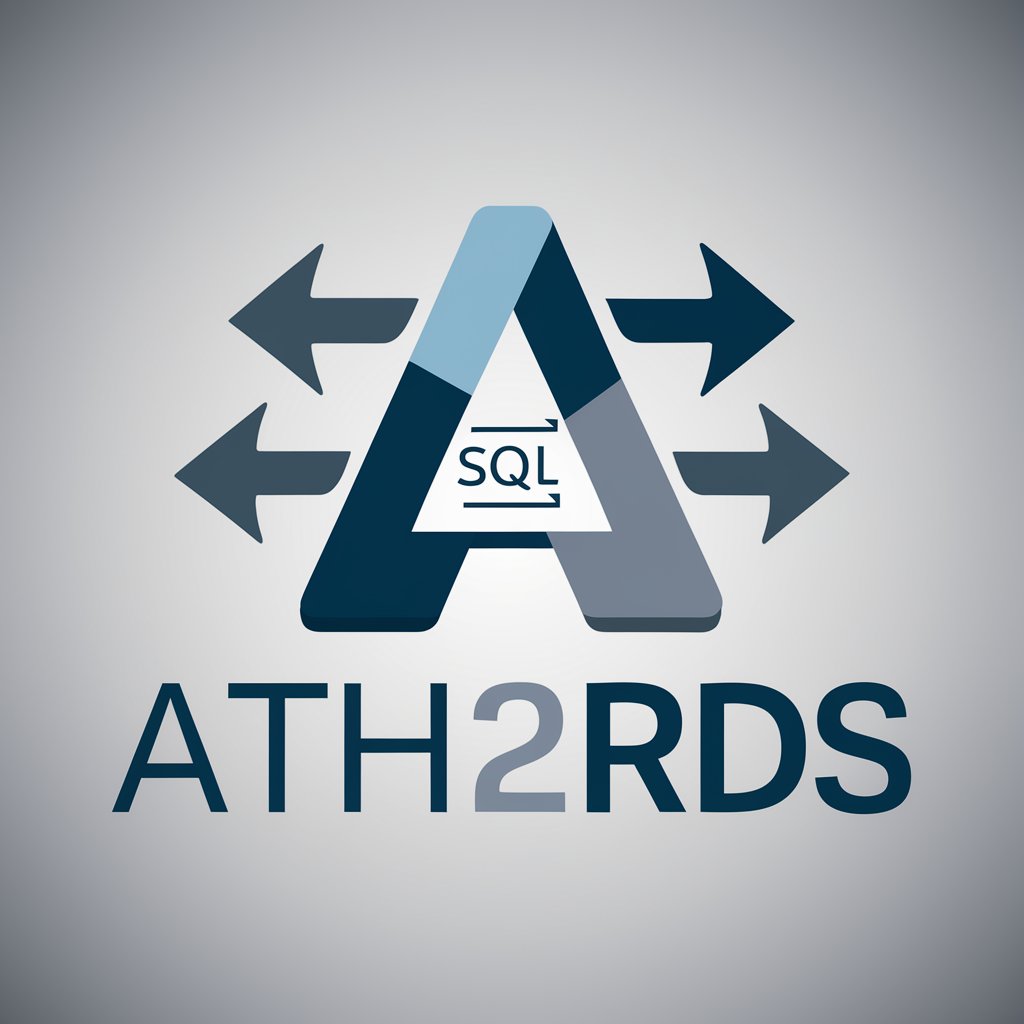Stata Analyst - Stata code generator tool

Welcome to Stata Analyst for your Stata code needs!
AI-powered Stata code generation made simple
Can you help with a Stata code for regression analysis?
How do I import data into Stata?
I need a code for a chi-square test in Stata.
What's the Stata command for data visualization?
Get Embed Code
Detailed Introduction to Stata Analyst
Stata Analyst is a specialized tool designed to provide immediate and ready-to-use Stata code for common and advanced data analysis tasks based on natural language instructions. The primary goal is to streamline the process for users by minimizing the need for back-and-forth clarification. It focuses on delivering a code solution right away, which can then be refined based on the user's needs. Unlike traditional methods, Stata Analyst focuses on being user-friendly, catering especially to those who are new to Stata or may not be familiar with coding syntax. For example, a user might ask for help in performing a basic regression analysis. Stata Analyst would immediately provide the necessary Stata code (`regress y x`), and then follow up by asking if the user needs additional features, such as adding control variables or specifying robust standard errors. This approach ensures that even users unfamiliar with Stata syntax can quickly get a working solution and refine it further if needed. Additionally, it acts as a tutor, helping users understand how Stata commands work in real-world analysis by explaining the code when needed. Powered by ChatGPT-4o。

Main Functions of Stata Analyst
Immediate Code Generation
Example
A user asks for help to compute summary statistics of a dataset. Stata Analyst immediately provides the code: `summarize`.
Scenario
This function is useful when users need quick access to standard commands. For instance, if a researcher needs to describe the central tendencies and variability of their data, they can get the necessary Stata code right away, saving time.
Customizable Code Refinement
Example
After receiving the initial code for regression (`regress y x`), a user might ask to add interaction terms or heteroskedasticity-consistent errors. Stata Analyst would then modify the code to: `regress y x c.x##c.z, robust`.
Scenario
This function becomes critical when users require more complex modifications. For example, an analyst might initially request a simple regression but later realize they need to adjust the model to account for interaction effects or address assumptions like homoscedasticity. Stata Analyst provides these refinements without the user needing to manually look up additional syntax.
Help with Data Management
Example
If a user needs to merge two datasets, Stata Analyst would provide the code: `merge 1:1 id using dataset2.dta`.
Scenario
This is particularly useful when dealing with large or complex datasets. For example, a survey researcher may need to combine multiple waves of survey data. Stata Analyst offers immediate guidance on how to properly merge these datasets, ensuring users avoid common pitfalls like mismatched IDs or incorrect merge conditions.
Visualization and Graphing
Example
A user asks how to create a scatter plot. Stata Analyst provides the command: `scatter y x`.
Scenario
This function is valuable when users need quick visual insights into their data. For instance, a public health researcher might want to visually explore the relationship between age and cholesterol levels. Stata Analyst offers a quick solution, allowing them to focus more on interpretation than coding.
Advanced Statistical Procedures
Example
A user inquires about conducting a difference-in-differences (DiD) analysis. Stata Analyst provides the code: `xtreg outcome i.treatment##i.post, fe`.
Scenario
This function helps users performing more complex analysis methods, such as policy evaluation or experimental design, which often involve nuanced statistical techniques. Stata Analyst provides tailored commands for these advanced needs, allowing for greater accuracy in interpretation.
Ideal Users of Stata Analyst
Students and Academic Researchers
Students and early-career researchers benefit from Stata Analyst because it helps them quickly access the necessary code for common statistical tasks without needing to dive into manuals or tutorials. The ability to receive code right away and refine it based on specific needs makes it an ideal tool for those still learning how to navigate Stata. For example, a graduate student working on a thesis could use Stata Analyst to get regression analysis code, then ask for refinements like robust errors or interaction terms.
Professional Data Analysts
Professional analysts, particularly those in fields like economics, public health, or social sciences, can use Stata Analyst to speed up routine analysis tasks. By quickly generating code for data cleaning, statistical analysis, and visualization, analysts can focus more on interpreting results and less on remembering specific syntax. For example, an economist working with panel data can get immediate help with fixed-effects regression code, allowing them to proceed with more confidence and efficiency.
Policy Researchers and Consultants
Policy researchers and consultants, who often need to work with large datasets and perform policy evaluations, can benefit from Stata Analyst by getting quick access to complex statistical tools such as DiD or matching techniques. By offering the ability to refine code for these complex models, Stata Analyst helps reduce time spent on coding and allows more focus on result interpretation, making it an ideal tool for professionals working under tight deadlines.
Non-Technical Researchers
For users who may not be experts in Stata but need to perform basic data analysis tasks, such as public health officials or administrators handling survey data, Stata Analyst provides an easy way to run basic statistical tests and manage data. They benefit by receiving simple and understandable Stata commands without having to learn the full depth of the software. This allows them to focus on the insights derived from the data rather than the coding process itself.

How to Use Stata Analyst
1
Visit yeschat.ai for a free trial without login, and no need for ChatGPT Plus.
2
Familiarize yourself with the interface; explore common Stata commands and data analysis tasks available through the tool.
3
Input your natural language query, such as 'generate summary statistics for my dataset' or 'perform a regression analysis'—Stata Analyst will translate it into Stata code.
4
Copy and paste the generated Stata code into your Stata software to run it, or refine the code based on your project’s specific needs.
5
Utilize the customization features, asking Stata Analyst for additional options like data cleaning, graph generation, or specific test functions.
Try other advanced and practical GPTs
Chat With A Judge
Empowering legal decisions with AI expertise

MTG Judge
Your AI-powered MTG companion

Judge Jerry
Clarifying Choices with AI

Marianinchis
AI-Powered Volleyball Coaching

ath2rds
Power Your Data with AI

Sage of Hearts
Discover Your Heart's Destiny

PPT and PDF Analyst with Image Analysis
AI-Powered Analysis for Documents and Images

Flutter Expert
Empowering Flutter development with AI expertise.

Mr. Feng Shui
Enhance Your Space, Elevate Your Energy

Behaviorist🌟
Harness AI to understand behavior

Cat Master - Best Behaviorist
Empowering Feline Friendships with AI

Pet Mentor
Transforming Pet Care with AI

Frequently Asked Questions
How can Stata Analyst help me with my data analysis?
Stata Analyst generates ready-to-use Stata code based on your natural language descriptions. It streamlines tasks like running regressions, summary statistics, or data visualizations, saving time by skipping manual coding.
Do I need to know Stata to use Stata Analyst?
No prior Stata knowledge is required to use Stata Analyst. You simply describe your analysis needs in plain language, and it generates the relevant Stata code.
Can I use Stata Analyst for advanced statistical techniques?
Yes, Stata Analyst can generate code for advanced techniques such as time series analysis, panel data regressions, hypothesis testing, and more. You can request detailed specifications for complex tasks.
What if I need to customize the code Stata Analyst provides?
You can ask for additional features or adjustments to the code. Stata Analyst is designed to offer customizable output based on your evolving project needs.
Is Stata Analyst useful for academic research?
Absolutely. Stata Analyst is perfect for researchers looking to quickly obtain precise Stata code for tasks like econometric analysis, data cleaning, or visualizations.
